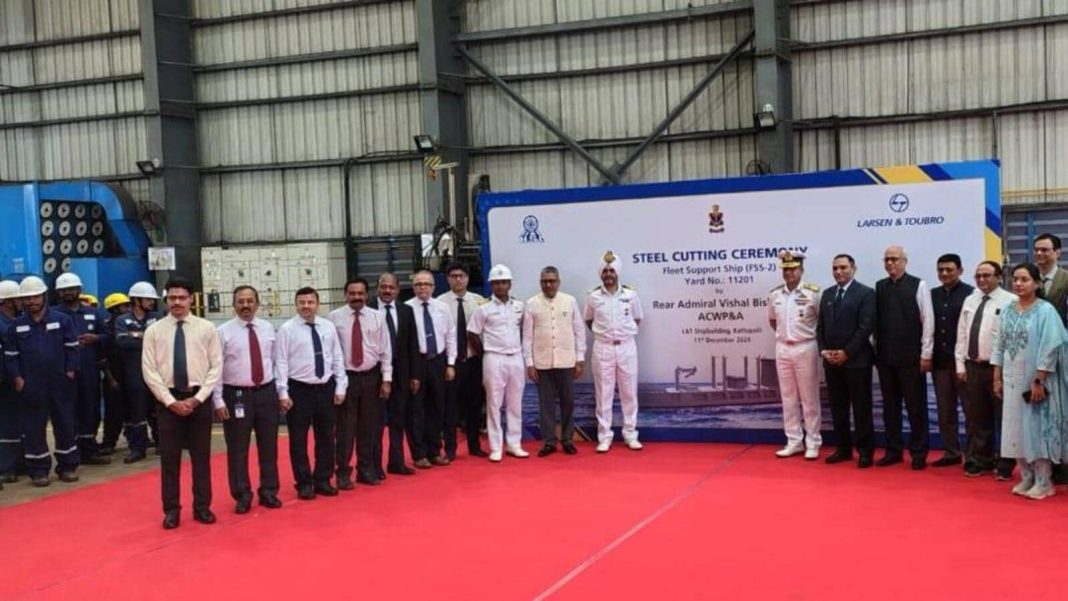In a significant advancement for the Indian Navy’s operational capabilities, a ‘steel cutting’ ceremony was conducted at the L&T yard in Kattupalli, Tamil Nadu, heralding the production of the second fleet support ship (FSS) as part of a broader initiative to fortify naval replenishment at sea. This development aligns with a ₹19,000-crore contract signed by the defence ministry with Hindustan Shipyard Ltd (HSL) in August 2023 for a total of five such vessels.
The ceremony on Wednesday took place eight months after the initial steel cutting of the first FSS at HSL in Visakhapatnam. The new vessels are designed to provide essential supplies—fuel, water, and ammunition—to the navy’s warships during missions, effectively expanding their operational range and endurance without the need to return to port.
Highlighting the collaborative efforts within India’s maritime industry, the navy emphasized the importance of the public-private partnership model. HSL has engaged L&T Shipyard for part of the construction of two fleet support ships, which is expected to optimize the country’s shipbuilding capabilities while adhering to tight delivery timelines.
The navy anticipates the delivery schedule to commence with the first vessel in mid-2027, followed by subsequent ships delivered at intervals of ten months. The FSS vessels are projected to be 225 meters in length and 32 meters in width, with a displacement of 40,000 tonnes. When operational, these vessels are expected to significantly augment the navy’s ‘blue water’ capabilities, facilitating prolonged naval operations without the necessity of returning to shore.
In addition to their primary mission, the fleet support ships will also be equipped to assist in humanitarian aid and disaster relief (HADR) operations, reflecting the navy’s commitment to versatile maritime engagement.
The project is poised to enhance India’s shipbuilding sector, with a focus on indigenous design and sourcing, in alignment with government initiatives like Aatmanirbhar Bharat, Make in India, and Make for the World. The sustained investment in these fleet support ships is part of the navy’s overarching strategy to become fully self-reliant by 2047, coinciding with the country’s celebration of a century of independence.
Moreover, this initiative is projected to create substantial employment opportunities, generating nearly 168.8 lakh man-days over the project’s eight-year timeline. The Indian Navy currently operates four fleet support vessels, commissioned between 1996 and 2011; thus, the addition of these new ships is essential to meet the increasing demands of naval operations in the Indian Ocean region.
Discover more from SSBCrack
Subscribe to get the latest posts sent to your email.








